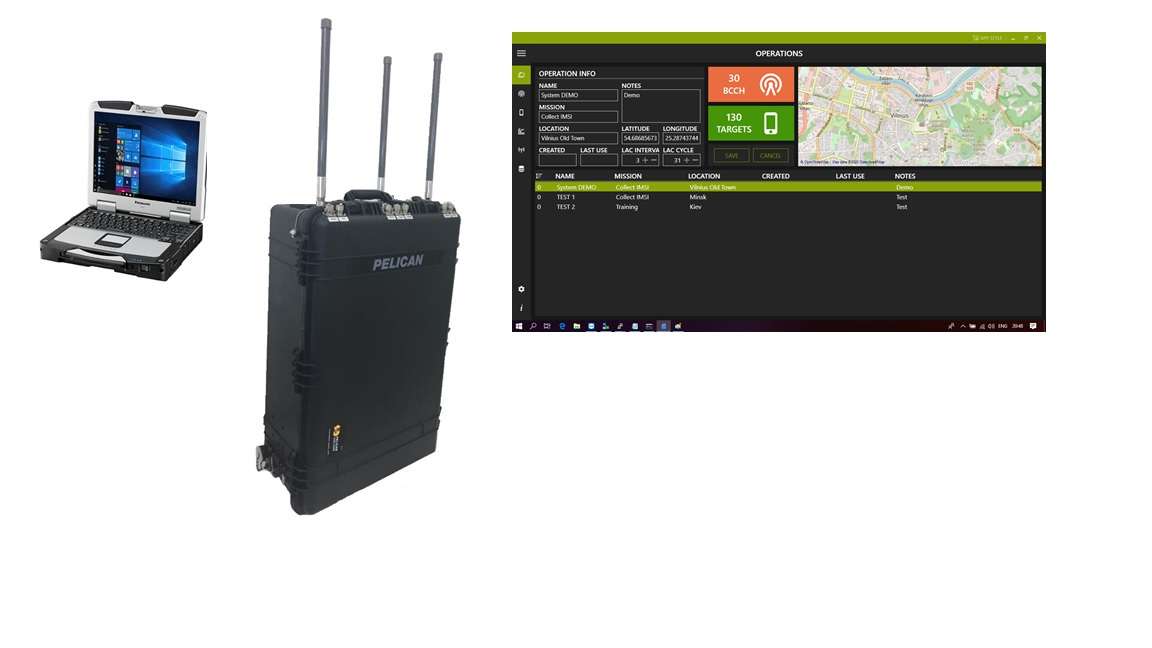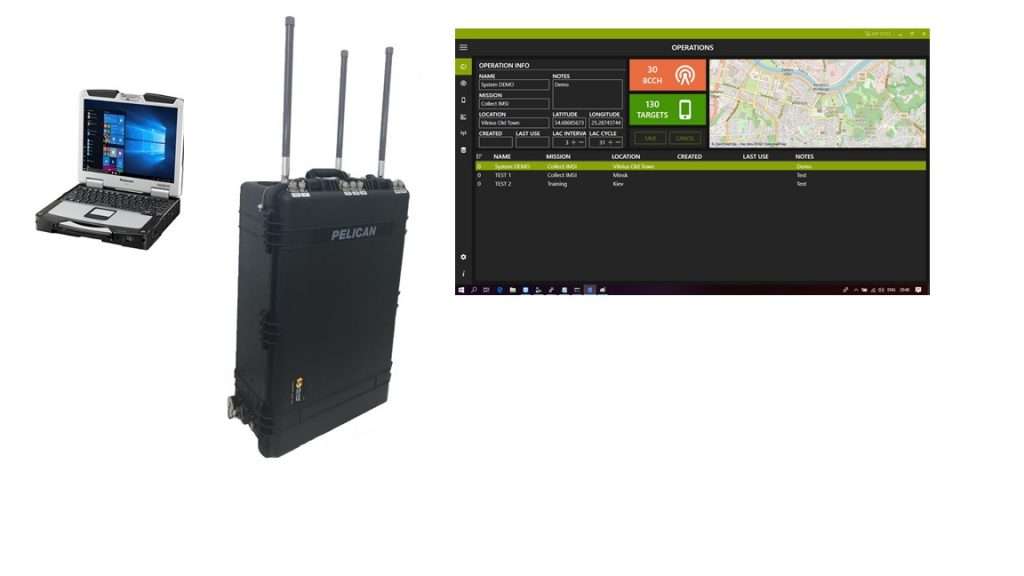Identity of International Mobile Subscribers

Key Identifier for Global Mobile Users – International Mobile Subscriber Identity
As manufacturers constantly update their identifying algorithms, device identification becomes increasingly crucial. One approach to tracking a device’s location and service provider details is through an International Mobile Subscriber Identity (IMSI) number.
IMSI numbers are unique identifiers assigned to each mobile device utilizing a cellular network. They consist of fifteen digits and are associated with the SIM card within the device. When a device is powered on and connects to a network, the IMSI number is transmitted to the network to authenticate and identify the device. It is then used to route calls and data to the device, as well as to monitor its usage.
Due to its global implementation, the use of IMSI numbers has raised security and privacy concerns. By tracking the IMSI number, location information can be obtained with relative ease, enabling unauthorized parties to monitor a user’s movements. Additionally, service providers may use the IMSI number to collect data on user behavior, which can be utilized for targeted marketing purposes.
International Mobile Subscriber Identity: Definition and Explanation
The International Mobile Subscriber Identity (IMSI) is a unique 15-digit number assigned to a mobile subscriber’s SIM card. The IMSI identifies a mobile phone subscriber within its network, providing crucial information for proper call routing and billing.
When a mobile phone is in contact with the network, it uses a temporary number known as Temporary Mobile Subscriber Identity (TMSI) to ensure the user’s confidentiality. This temporary number changes frequently, safeguarding the user’s privacy while maintaining connection to the network.
IMSI is assigned by the GSM network operator, specifying the operator with which the subscriber has an account in a certain country. The second part of the IMSI is used to uniquely identify the subscriber. This concept was first formulated in 1988 and has since become crucial to the functioning of mobile networks worldwide.
The IMSI is kept within the phone’s Subscriber Identity Module (SIM), which is sent to the relevant network by the phone. This IMSI is then used to look up information about a mobile phone in the Home Location Register (HLR) or Visitor Location Register (VLR), providing accurate billing and facilitating call routing.”
IMSI Number Mechanism: Understanding how it Works
At the time of use, the IMSI is allocated to a mobile station or cellphone tower. It is used to identify a certain mobile station. IMSI is a 15-digit number that carries the following information:
1. MCC (Mobile Country Code) — three digits (home country)
2. MNC (Mobile Network Code) — two digits (home network)
3. Subscriber Identification Number (SIN) for mobile phones (MSIN)
Uses of IMSI Number: Understanding When It is Used
While an IMSI number may not be a term that most mobile device users are familiar with, it plays a crucial role in how their devices work. IMSI, which stands for International Mobile Subscriber Identity, is a unique identification number assigned to each mobile device user by their carrier. This number helps carriers assign and manage the services that are available to each user.
Although most users do not need to know their IMSI number, they have the option to find it using various apps available in app stores. By knowing their IMSI number, users can access other services that require this information, such as switching carriers, activating a new SIM card, or unlocking their device for use abroad.
One important aspect of the IMSI is that it can indicate whether a user is roaming outside of their home country. The first two elements of an IMSI number represent the mobile network operator that issued the SIM card and the country where the SIM card was registered. This information can help carriers apply the correct invoicing for calls, texts, and data usage when a user is travelling abroad, helping to prevent any unexpected charges on the user’s bill.
IMSI Number Tracing: How to Track Mobile Devices
If you are not the phone subscriber, you must work for the operator or police enforcement with a legal right (such as a warrant) and must know the most recent location.
The cell phone network knows which cellphone is on, when it is on a call, or when it is utilizing data. A network provider knows the position of a little bigger set of cells, and the most recent active cell if the phone is idle.
Networks may only know the last call that the phone was on before it was shut off if the phone is currently switched off.
IMSI Catcher
An International Mobile Subscriber Identity catcher is a gadget that uses the unique IMSI number to detect and track all mobile phones connected to a phone network in its area.
It accomplishes this by impersonating a cellphone tower and deceiving adjacent mobile phones into connecting to it. This allows it to intercept data sent from that phone to the cell tower without the user knowing.
In this circumstance, the most readily available information about you is your location. Cell towers use triangulation to determine your approximate location, which is how network providers provide you with service in the first place.
Data kept on a phone is not read by IMSI catchers. These devices may be used to intercept phone calls or text messages.
IMSI catchers are unable to read the contents of encrypted messages sent over end-to-end encrypted systems. Some examples are Signal, WhatsApp, and Wire.
How Law Enforcement May Use IMSI Catchers
IMSI catchers have been a major concern in the realm of civil liberties and privacy. These devices are commonly used by authorities to identify individuals at public gatherings such as protests. By capturing IMSI numbers of all phones within an area, authorities can track the movement of individuals and keep tabs on their activities.
In addition, some IMSI catchers can be used to disrupt or prevent protests before they even take place. The use of such technology raises concerns about freedom of assembly, censorship, and the right to protest.
The dangers of IMSI catchers go beyond just tracking and monitoring. These devices can also be used to intercept calls and messages, block communication, and even change the content of messages. If an IMSI catcher falls into the wrong hands, it could be used for nefarious purposes such as identity theft or fraud.
Lastly, IMSI catchers can be used to impersonate someone and send text messages on their behalf. This alarming capability raises questions about how secure our personal data really is, and whether authorities or other malicious entities have the ability to manipulate our communication without our knowledge or consent.
Concluding Reflections
In today’s world, where the number of devices on a network is increasing rapidly, accurate device identification has become increasingly important. This is even more crucial as device manufacturers continue to update their identification algorithms.
For network operators, ensuring that they assign the right services to the correct devices is of utmost importance. Accurate identification devices play a critical role in making this happen. Without proper device identification, network operators may not be able to correctly allocate network resources and services, which can lead to issues such as congestion, slow speeds, and even downtime.
As a result, device identification has become a critical component of network management, and one that cannot be overlooked. With the right identification tools in place, network operators can not only ensure that services are allocated to the right devices, but they can also gain insights into network usage patterns and potential security threats. By constantly enhancing device identification capabilities, network operators can stay on top of the growing number of connected devices while providing reliable and efficient service to their users.









